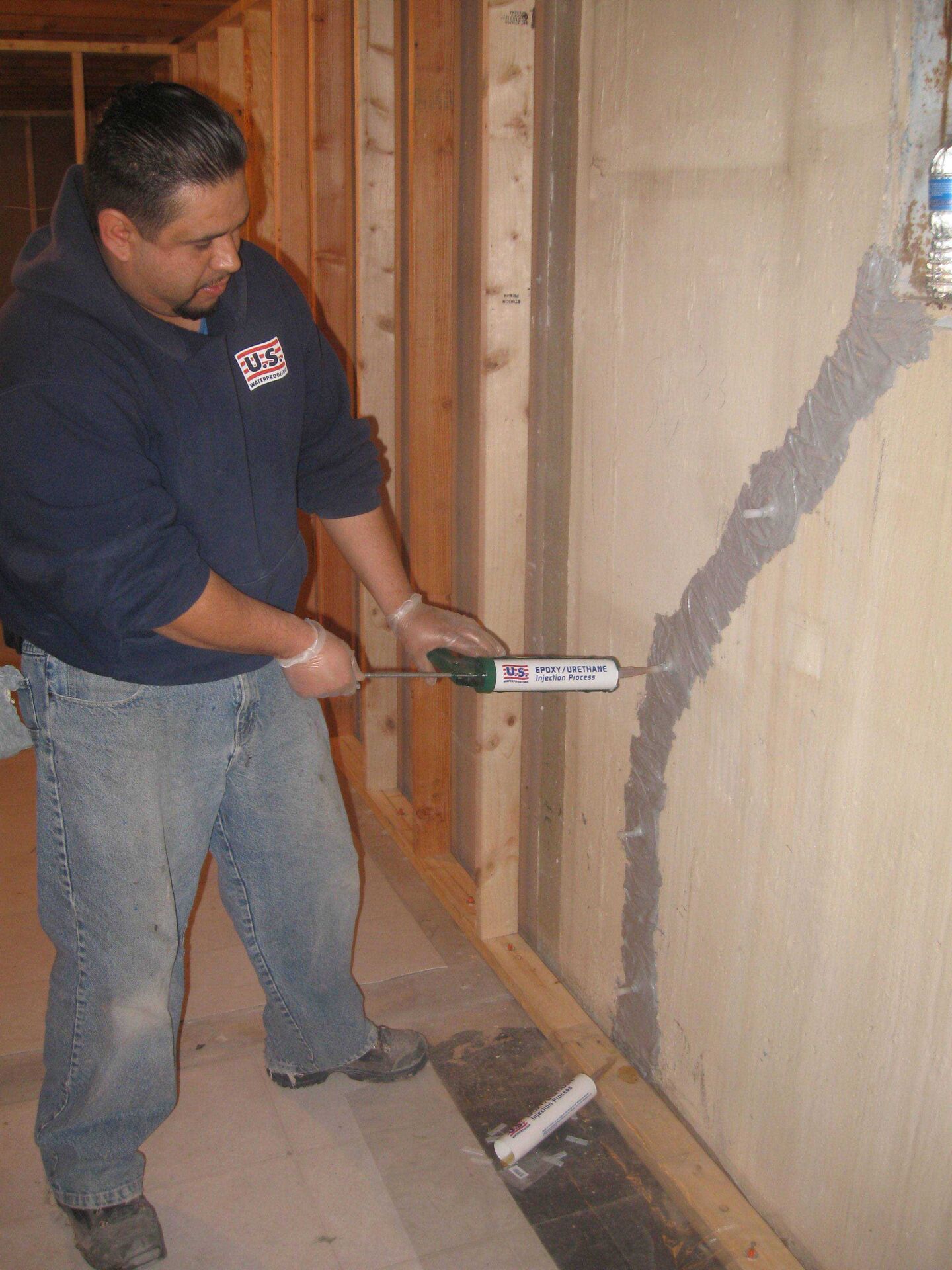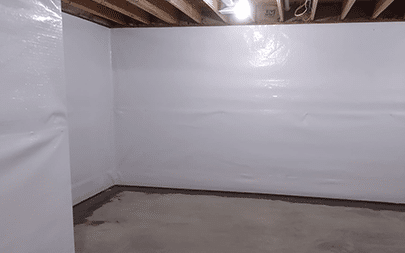Basement Waterproofing Ames Fundamentals Explained
Basement Waterproofing Ames Fundamentals Explained
Blog Article
Not known Factual Statements About Basement Waterproofing Ames
Table of ContentsThe Best Strategy To Use For Basement Waterproofing AmesAn Unbiased View of Basement Waterproofing AmesBasement Waterproofing Ames - QuestionsBasement Waterproofing Ames Things To Know Before You Get ThisBasement Waterproofing Ames Can Be Fun For AnyoneRumored Buzz on Basement Waterproofing Ames
Frequently check your cellar for signs of dampness, such as damp areas, mold and mildew, or stuffy odors. In spring, melting snow and boosted rains can lead to water build-up.In winter season, freezing temperature levels can create structure fractures to broaden. While some tasks can be dealt with by house owners, it's commonly best to speak with a specialist for complex issues. Experts have the experience to identify and deal with origin properly. Employing a specialist deals countless advantages: Experts have the competence to determine the origin of wetness troubles and offer efficient options.
With so much info out there, it's hard to recognize who to trust fund - basement waterproofing ames. When you have actually got a basement waterproofing or mold and mildew issue, you want to obtain the appropriate responses, fix the problem, and proceed with the important things in your life that actually matter. Our resource facility gives genuine answers to several of the most common questions and experiences home owners go with when thinking about basement waterproofing

The Only Guide to Basement Waterproofing Ames
by Nick Gromicko, CMIBasements are typically the area of a structure most at threat for water damage since they lie listed below quality and bordered by soil. Dirt launches water it has actually taken in during rain or when snow thaws, and the water can wind up in the basement with leaks or fractures.
Inspectors can also take advantage of understanding these standard techniques for avoiding leakages and floodings. Preventing water from going into the cellar by guaranteeing it is diverted away from the structure is of key concern. Poor roof covering drain and surface area drainage due to seamless gutter problems and inappropriate site grading might be one of the most usual root causes of damp cellars.
Here are some steps to draw away water far from the structure: Set up and keep gutters and downspouts so that they route all rain and snow melt far enough away from the foundation of the building to guarantee that merging does not occur near the walls of the framework. At the very least 10 feet from the structure is best, and at the point where water leaves the downspout, it needs to have the ability to flow openly away from the structure rather than back towards it, and need to not be gathering in pools.
Low areas that may bring about water merging should be evened out to protect against the possibility of standing water near the structure. Superficial ditches called swales need to be used in conditions where several sides of the structure encounter an upward slope (basement waterproofing ames). A swale needs to slope away from the building for 10 to 15 feet, at which factor it can empty into one more swale that routes water around to the downhill-side of the structure, leading it away from the structure
How Basement Waterproofing Ames can Save You Time, Stress, and Money.
Water pressure from the outside might be constructing up, requiring water via wall surfaces. The house may have cleared up, creating splits in the floor or walls.
Right here are some steps to take if you believe that water is getting in the basement via splits or holes: Identify locations where water may be entering via fractures or holes by Full Article looking for wetness, leaking or staining. Every square inch of the basement need to be examined, specifically in cases where leaking or flooding has actually not been noticeable, however wetness build-up is readily apparent.
This is a waterproof formula that can help make sure that wetness and water do not penetrate basement wall surfaces. It is reliable mostly for very small cracks and openings. Any type of cracks bigger than around 1/8-inch need to be loaded with mortar made from one part cement and 2 components fine sand, with simply sufficient water to make a relatively stiff like it mortar.
Getting My Basement Waterproofing Ames To Work
Utilizing a chipping sculpt and hammer or a cool carve, reduced a dovetail groove along the mouth of each fracture to be filled up, and afterwards apply the mortar extensively. The dovetail groove, when loaded, should be solid sufficient to withstand the pressure of pressure that was pushing water with the crack.
Breathing can also cause irritation to the breathing tract. Sodium silicate need to be applied only to bare concrete, concrete block or masonry that has actually been cleansed thoroughly and is complimentary of any type of dust, oil, adhesives, paint and oil.
Sodium silicate should not be over-applied or it will not be totally soaked up by the substrate, leaving a white residue. Paint can then be applied without fear of water vapor getting entraped in between the paint and the wall surface, which might ultimately create blistering and peeling off. Adhesives for floor tile or flooring treatment can likewise be used better, once the substratum has actually been sealed.
Basement Waterproofing Ames Fundamentals Explained
Having a home is a substantial financial investment, both monetarily and emotionally. Every homeowner needs to guarantee that essential structural aspects of the residence, such as the foundation, continue to be durable and sturdy. Caring for the structure by waterproofing your basement can confirm to be an important action in preventing architectural damage and improving your home's resilience.
Find out the basics, advantages, and the detailed guide to make sure that your home stands high and solid for generations to find. Cellar waterproofing is a vital yet often overlooked element of home upkeep. To understand why cellar waterproofing is necessary, it is essential to comprehend the essential principles. Cellars are the foundation of your home, situated below ground level.
This can cause a wet, stuffy content cellar, create fractures in the wall surfaces or, in severe cases, bring about flooding. Waterproofing, by interpretation, is making something untouched by water and resistant to it, which's specifically what cellar waterproofing aims to achieve. The essence of this process is to develop an obstacle to combat the dampness that your basement walls come in call with, thus stopping any type of damage to the foundation and inside of your residence.
Basement Waterproofing Ames for Dummies

Report this page